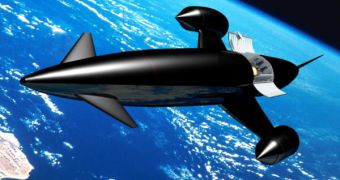ESA is planning big for the next decade, its recent actions show. It envisions and supports the construction of a groundbreaking project meant to yield a spacecraft capable of behaving both as a jet airplane and as a rocket. Basically, the new system will be capable of lift-of from an airfield, deliver up to 12 tonnes of cargo into orbit, and then return to land on the same runway. Such an innovation would forever change the nature of spaceflight as we know it, and would open the gates of development for this $150 billion-per-year industry.
The new design rests upon an engine capable of working in both atmospheric and orbital modes. As it lifts from the ground, it will consume oxygen, such as regular airplane engines. But when it reaches higher altitudes where adequate oxygen supplies become a serious problem, it will switch to orbital mode. This means that its hydrogen fuel will be burnt using liquid oxygen from its own tanks, rather than outside air.
The key element for the success of this project, dubbed Skylon, is the creation of a highly-efficient heat exchanger pre-cooler, whose purpose would be to cool atmospheric air before injecting it for burning in the main thrusters, while the spacecraft is in jet mode. The next stage would be to compress this air, so that it could be fed to the burning chambers, where it would be ignited with vast amounts of hydrogen.
Reaction Engines Limited (REL) has been recently awarded a one million-euro contract by the European Space Agency (ESA) in order to begin preliminary work on the creation of the cooling system, essential for the SABRE air-breathing rocket engine. Once completed, the innovation will be tested at the company's B9 jet engine-powered experimental facility from Culham, Oxfordshire, the UK.
“Traditional throw-away rockets costing more than a $100 million per launch are a drag on the growth of this market. The Holy Grail to transform the economics of getting into space is to use a truly re-usable spaceplane capable of taking off from an airport and climbing directly into space, delivering its satellite payload and automatically returning safely to Earth,” Alan Bond, who is the managing director of REL, says.

 14 DAY TRIAL //
14 DAY TRIAL //